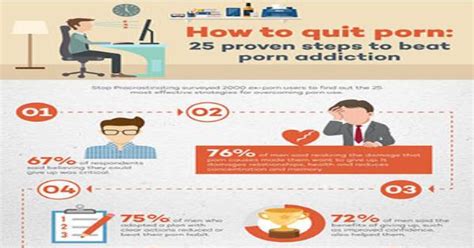How to Stop Porn Addiction: A Guide to Recovery and a Healthier Life
Porn addiction is a serious issue affecting millions, but it's crucial to remember that recovery is possible. This isn't about shame; it's about reclaiming control of your life and building a healthier relationship with yourself and others. This guide provides actionable steps and resources to help you on your journey to overcoming porn addiction.
Understanding Porn Addiction
Before diving into solutions, it's vital to understand what constitutes porn addiction. It's more than just watching pornography; it's about the compulsive behavior and the negative consequences it brings. Key indicators include:
- Loss of control: Feeling unable to stop watching porn despite negative consequences.
- Negative consequences: Strained relationships, decreased productivity, financial problems, feelings of guilt and shame.
- Withdrawal symptoms: Irritability, anxiety, or depression when attempting to quit.
- Prioritizing porn: Neglecting responsibilities and relationships to consume porn.
It's important to note: If you're struggling with these symptoms, you're not alone. Seeking professional help is a sign of strength, not weakness.
Steps to Overcoming Porn Addiction
Recovery is a process, not a destination. Be patient with yourself and celebrate small victories along the way. Here's a structured approach:
1. Acknowledge the Problem
The first step is admitting you have a problem. This can be incredibly difficult, but it's the foundation for change. Honest self-reflection is key. Consider journaling your thoughts and feelings surrounding your porn use.
2. Seek Support
Don't try to go it alone. Support is crucial in overcoming addiction. This could involve:
- Therapy: A therapist specializing in addiction can provide guidance and coping mechanisms.
- Support groups: Connecting with others facing similar challenges can offer invaluable support and understanding. Look for groups specifically addressing sexual addiction.
- Trusted friends or family: Sharing your struggle with someone you trust can provide emotional support and accountability.
3. Develop Healthy Coping Mechanisms
Identify your triggers and develop strategies to manage them. This could involve:
- Mindfulness and meditation: These techniques can help you become more aware of your thoughts and feelings, reducing impulsive behavior.
- Exercise: Physical activity releases endorphins, improving mood and reducing stress.
- Healthy hobbies: Engage in activities you enjoy that distract you from cravings.
- Improved sleep hygiene: Sufficient sleep improves overall well-being and reduces stress, making it easier to manage cravings.
4. Accountability and Boundaries
- Accountability partner: Sharing your progress with a trusted friend or family member can provide encouragement and keep you accountable.
- Internet filters: Blocking websites and apps can prevent impulsive urges.
- Removing triggers: Identify and remove anything that triggers your cravings, such as certain websites or apps.
5. Forgiveness and Self-Compassion
Be kind to yourself. Relapses are part of the recovery process. Don't let setbacks derail your progress. Learn from them, adjust your strategies, and keep moving forward. Self-forgiveness is vital for long-term recovery.
Resources for Help
While this guide offers valuable information, remember that professional help is often necessary. Consider seeking guidance from:
- Your primary care physician: They can provide referrals to specialists.
- Mental health professionals: Therapists specializing in addiction can provide personalized treatment plans.
- Support groups: Online and in-person support groups offer a sense of community and shared experience.
Overcoming porn addiction requires commitment and effort, but with the right support and strategies, a healthier, more fulfilling life is within reach. Remember to be patient with yourself, celebrate your progress, and never hesitate to seek professional help. You are not alone.
